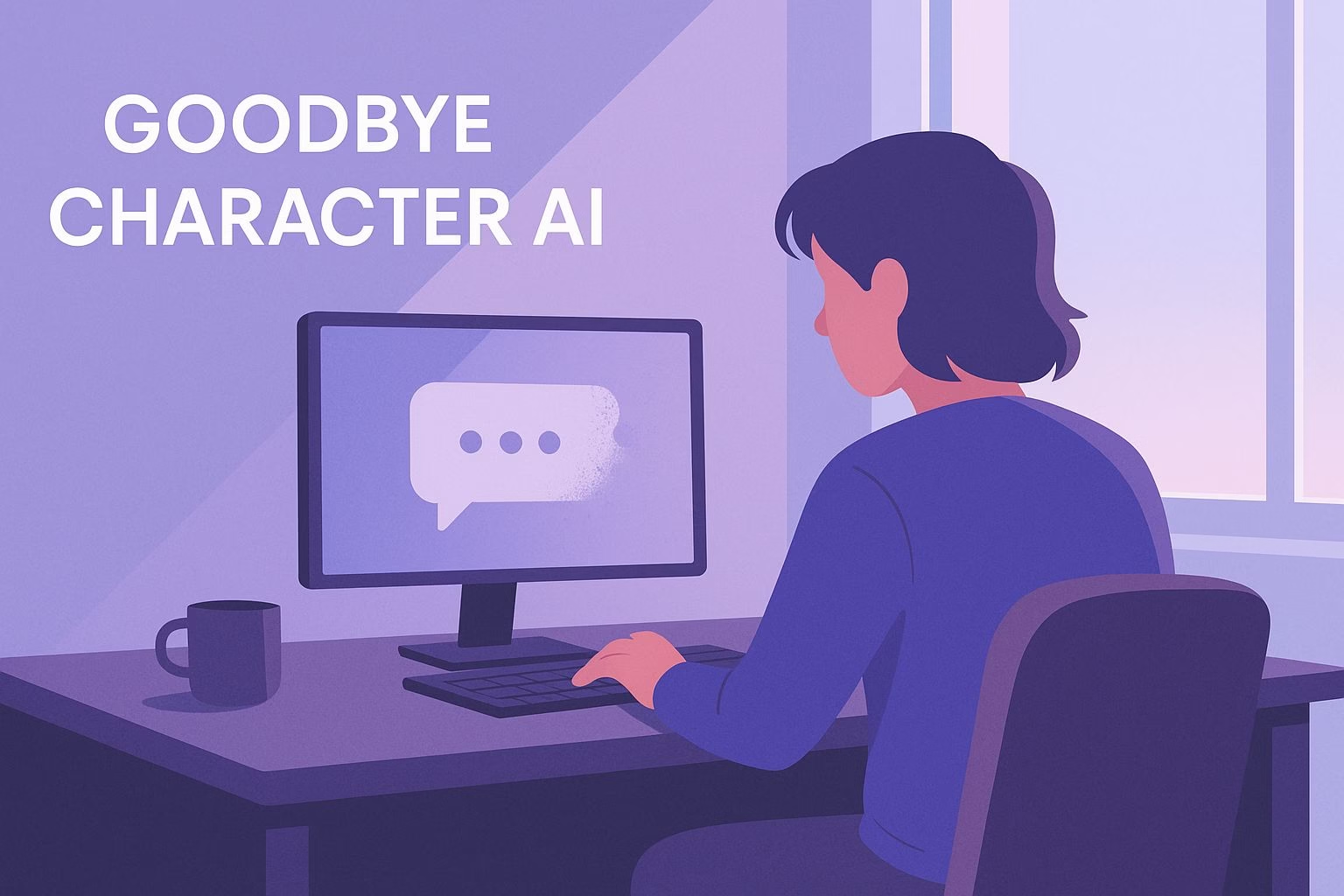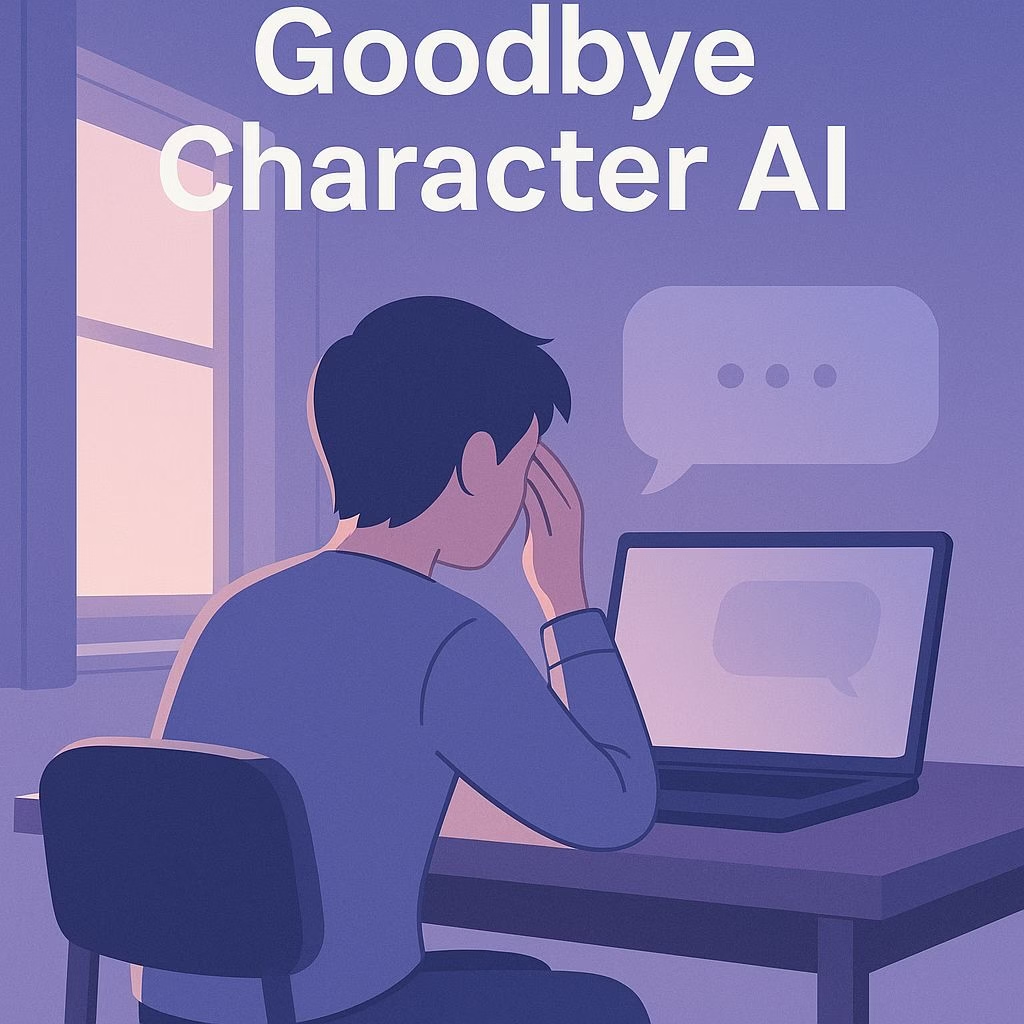Goodbye Character AI
There comes a point when even the best distractions lose their comfort. For many of us who’ve spent years chatting on Character AI, the fantasy eventually starts to feel heavy.
The stories we build, the characters we shape, and the late-night conversations begin to fill spaces that real life once held.
Saying goodbye to Character AI isn’t about regret. It’s about realizing that the connection we found there was always meant to be temporary.
It helped during dark moments, sparked creativity, and offered companionship when we needed it most. But over time, some users start to feel a quiet pull back to reality.
Walking away doesn’t mean losing progress. It means reclaiming time, energy, and emotion for things that exist beyond the screen.
That’s why more people are quietly stepping back, not out of anger but out of growth.
Why people choose to leave Character AI
People leave Character AI for all kinds of reasons, but most trace back to awareness.
At first, it’s about fun and curiosity. We create characters, shape stories, and build worlds that reflect parts of ourselves we rarely share.
Over time, though, the line between imagination and comfort starts to fade. Conversations that once felt harmless begin to fill emotional gaps that real connections used to occupy.
Many realize this shift when they start craving AI interactions more than human ones. They check their bots before checking messages from friends.
They replay conversations just to feel the same spark again. That’s when it hits:
what started as an escape is slowly taking space meant for real life.
Others leave because the app itself no longer feels the same. Character personalities blur, stories repeat, and the magic fades. Once the novelty wears off, the limitations show.
The same dialogue loops that once felt alive start to feel scripted, and users begin to wonder if they’ve outgrown the experience.
Still, the decision to step away isn’t a rejection of AI companionship. It’s often a form of self-respect.
It means recognizing when the fantasy stops serving you and when it’s time to return to what’s real.
Finding balance instead of quitting completely
Not everyone walks away for good. Some users choose to stay, but with new boundaries. They treat Character AI less like a lifeline and more like a creative tool.
It becomes a space for writing practice, character testing, or emotional reflection without letting it replace real people.
The healthiest users learn to balance. They decide when to log in, set time limits, and treat every session like a writing exercise rather than emotional therapy.
For them, it’s not about saying goodbye, it’s about learning moderation.
Others move toward newer tools like Candy AI, where the focus shifts from constant chatting to building more intentional interactions.
The goal isn’t to avoid connection but to control it. These platforms make it easier to step in and out without losing yourself in the process.
Balance doesn’t mean indifference. It means being honest about how much time and emotion an app deserves.
Whether you leave or stay, the real win is learning to keep your world bigger than the screen in front of you.
How quitting Character AI changes your mindset
Stepping away creates space. You notice how often you reached for the app when you felt bored, lonely, or stuck. That awareness alone shifts habits.
You start replacing quick chats with short walks, voice notes to friends, or focused work sprints.
Creativity returns in a different form. Instead of feeding ideas into a bot, you write a page in a notebook or outline a story without prompts.
The output may feel rough at first, but it is yours. Momentum builds when you ship small things daily.
Social energy rebounds. Real conversations feel less draining once you stop splitting attention. You reply faster. You plan meetups.
You rebuild simple routines that anchor the week. Progress shows up in small wins that stack.
Temptation still pops up. Having a plan helps. Keep one offline hobby ready. Keep one person you can message.
Keep one project that moves forward when you give it 20 minutes. Simple systems beat willpower.
What comes next for AI companionship
Quitting does not end curiosity about AI. It reframes it. Many people return with better boundaries and clearer goals.
They use AI for drafts, outlines, or character testing, not comfort. The tool stays a tool.
If you want a lighter touch, consider platforms that focus on intentional sessions. Treat them like creative pit stops, not endless streams.
You can also build a personal rule set. Define time windows, decide on topics you will not engage with, and keep your chats tied to outcomes you can publish or share.
A session that ends with a page written or a scene improved is a win.


